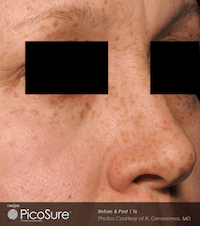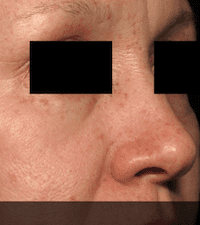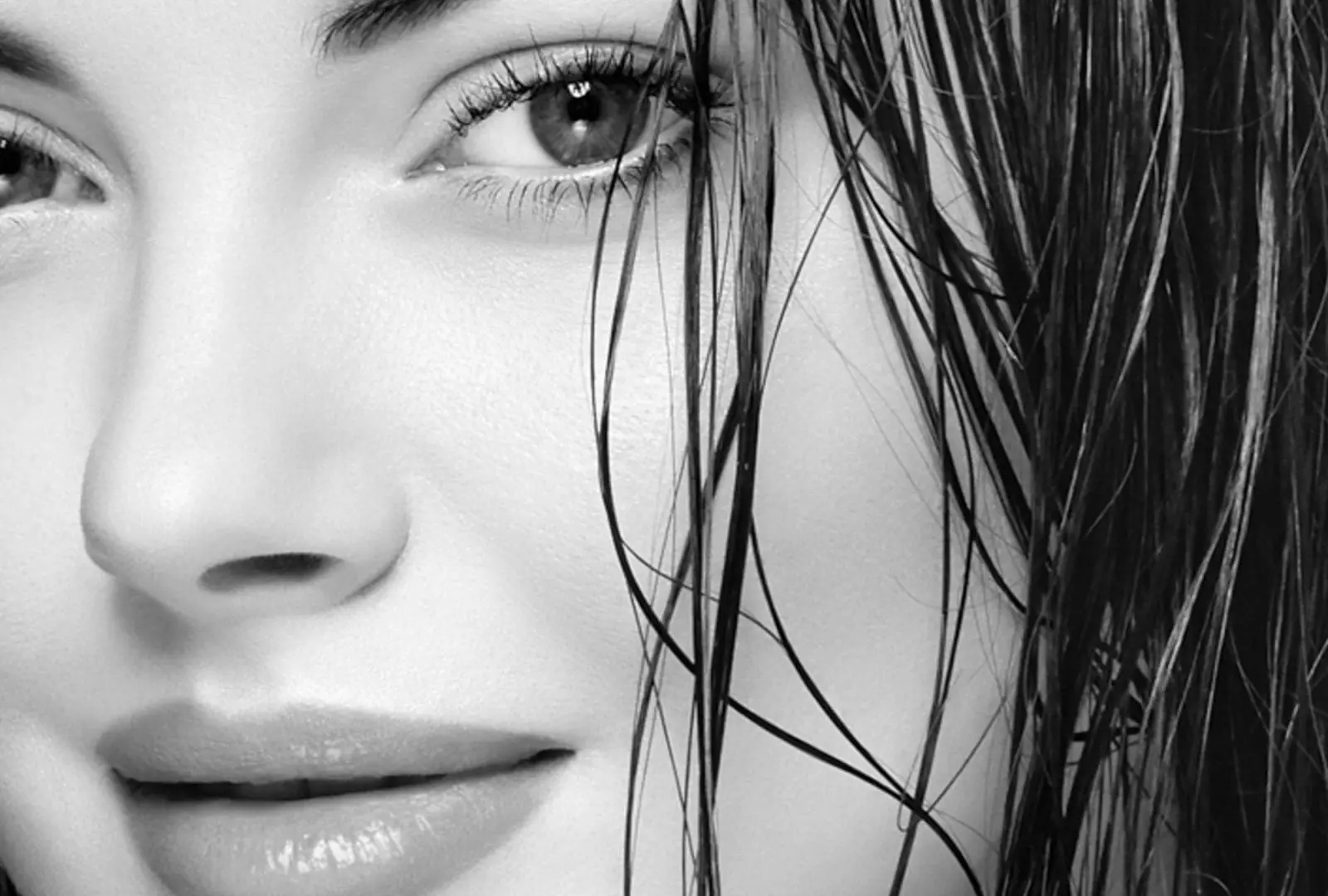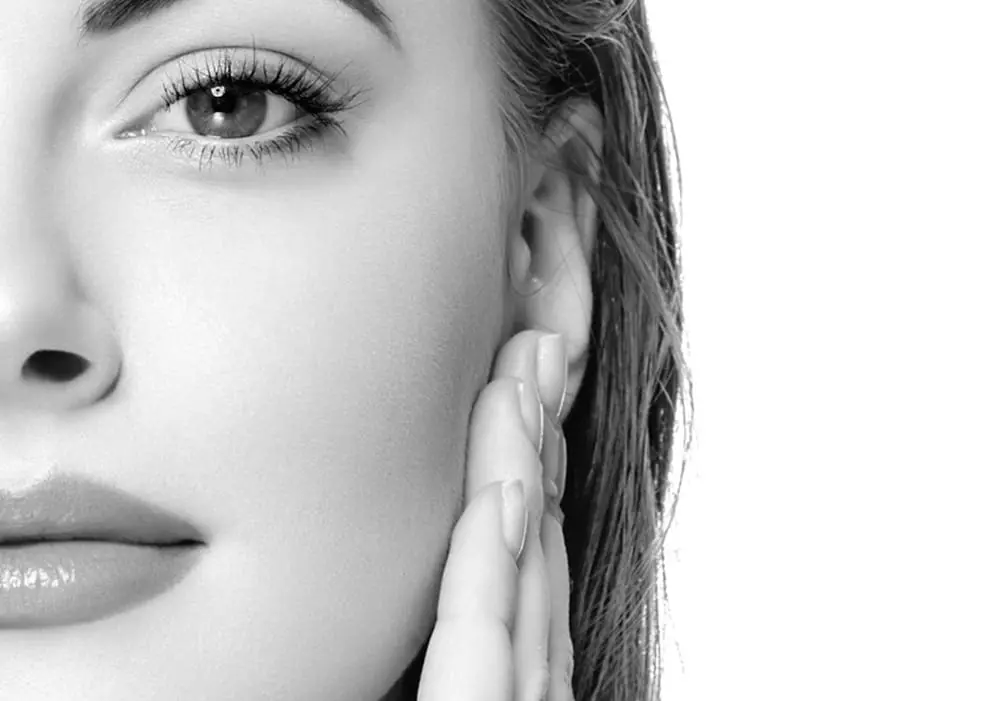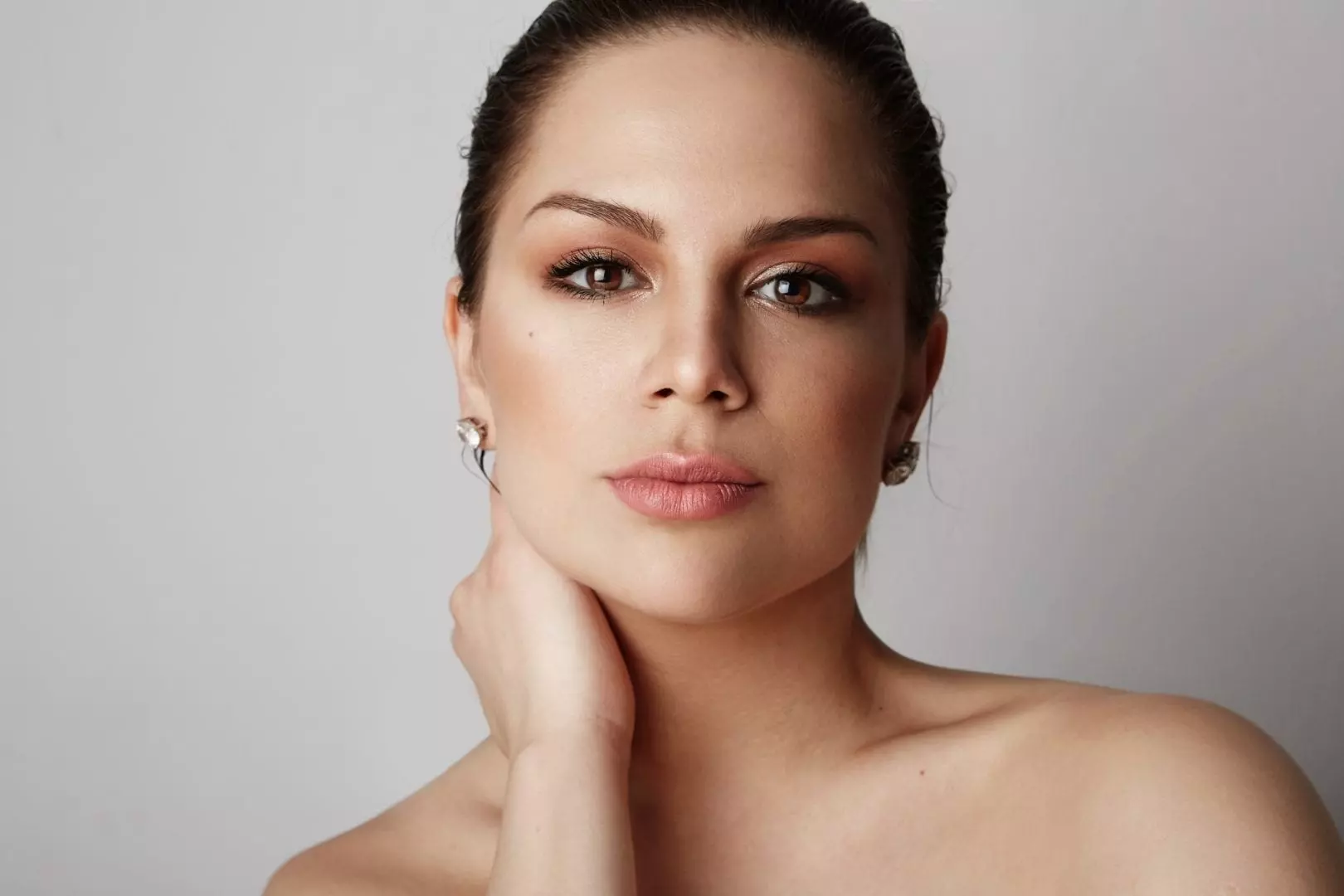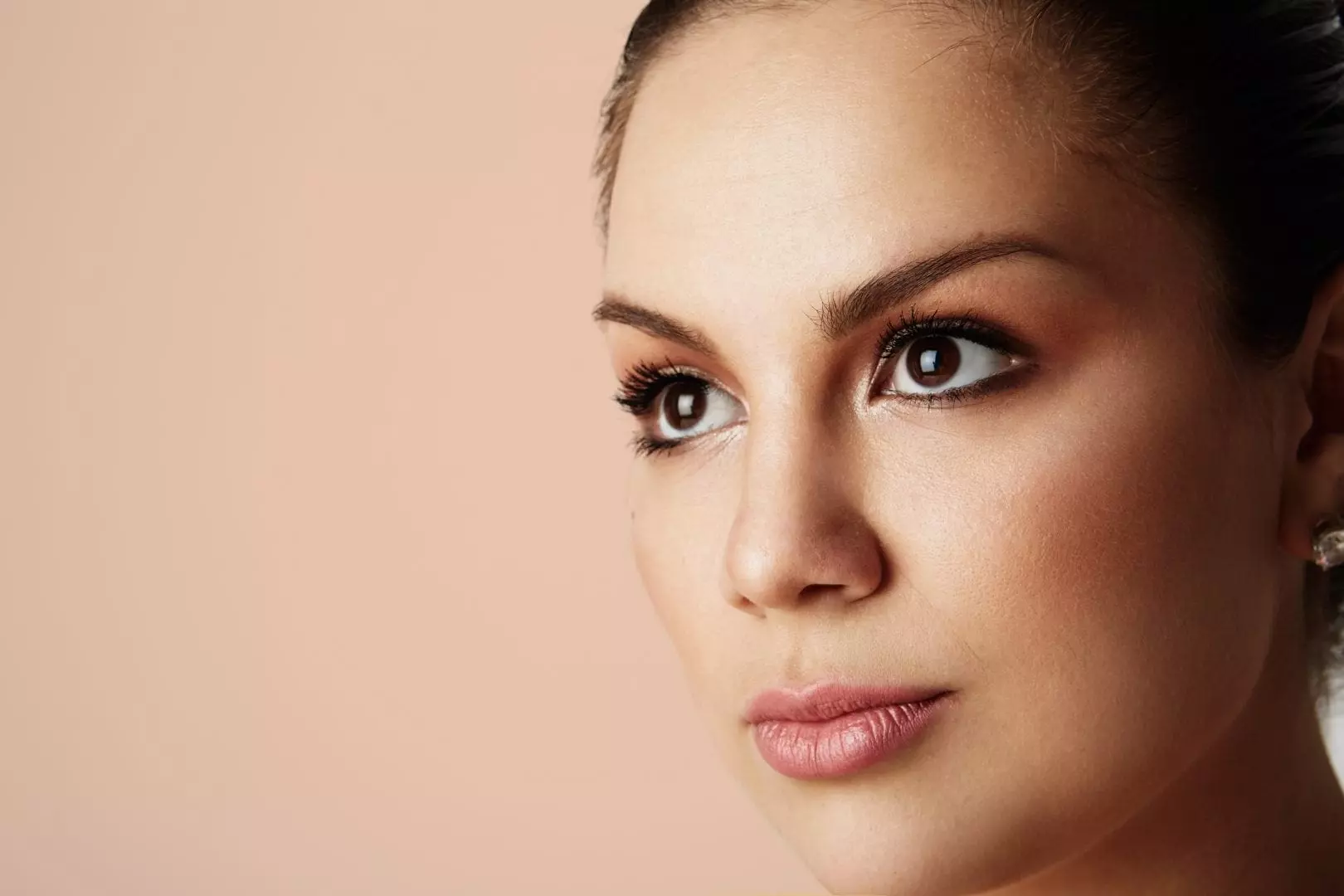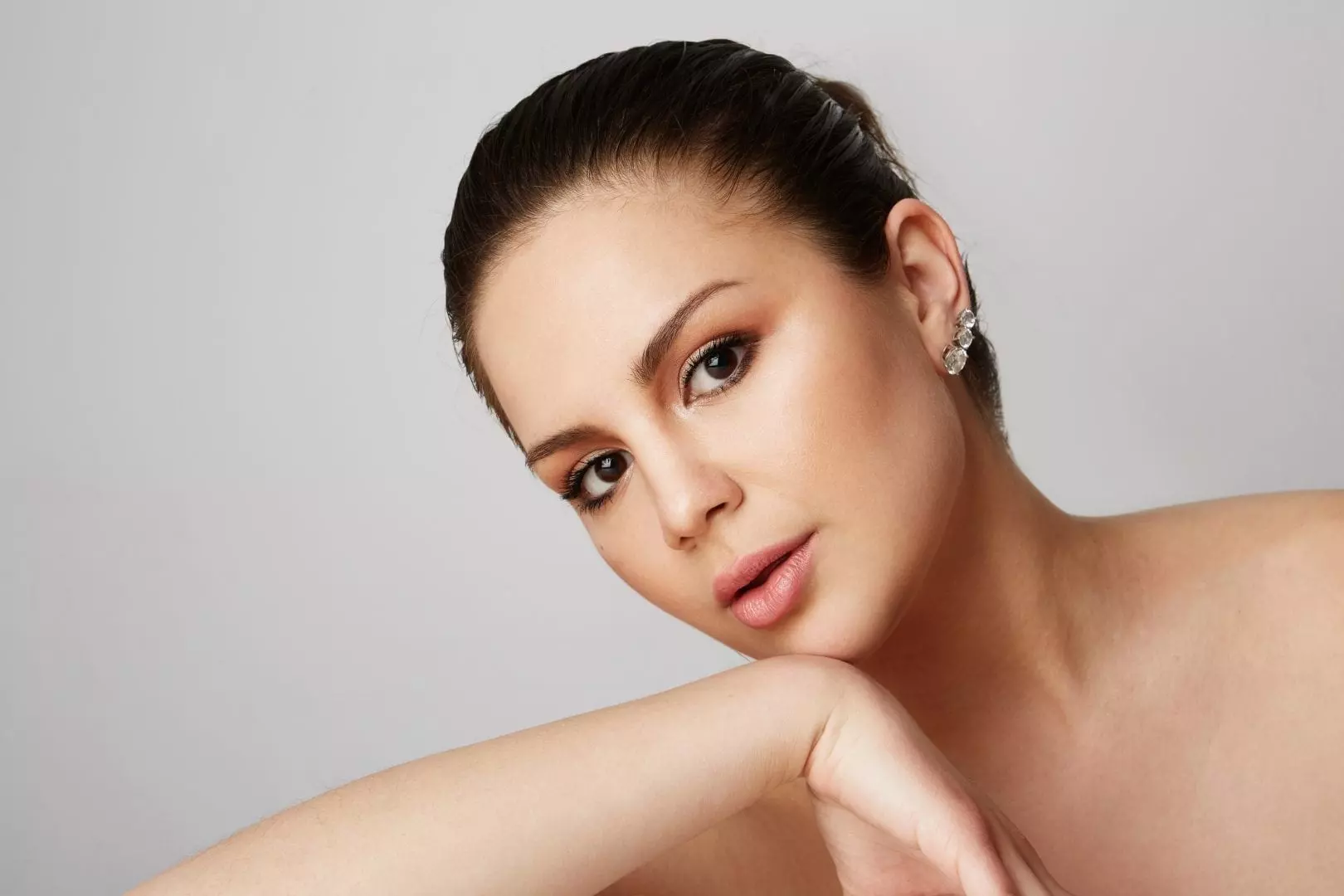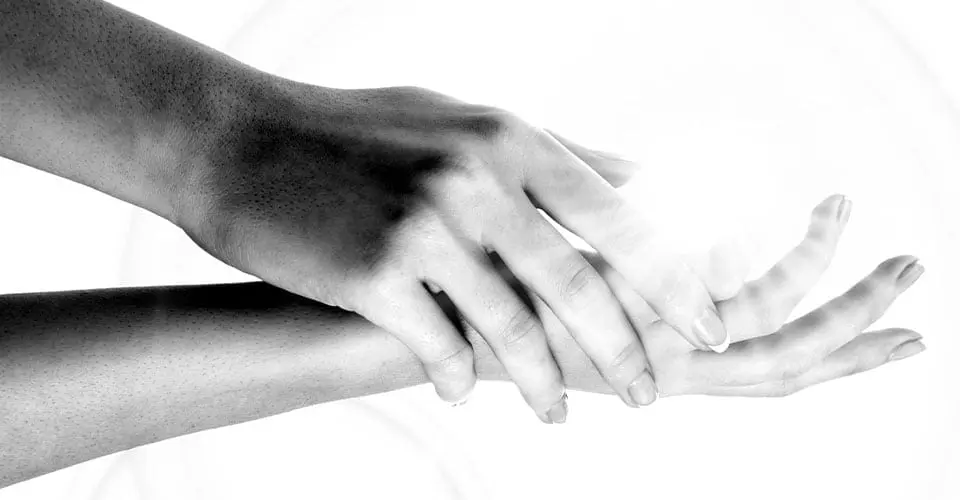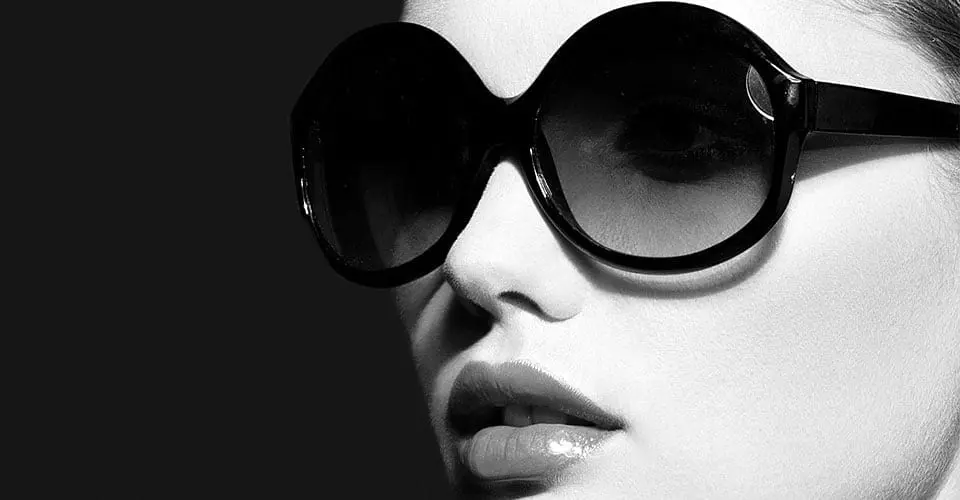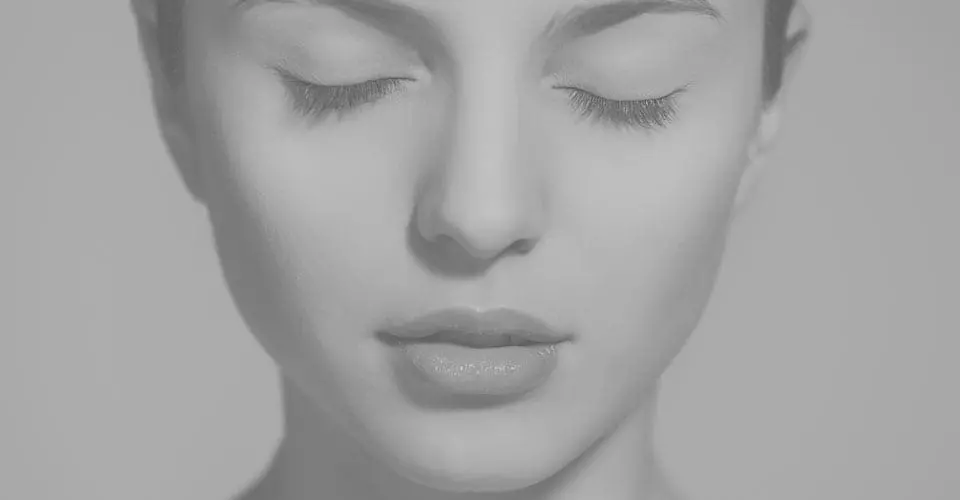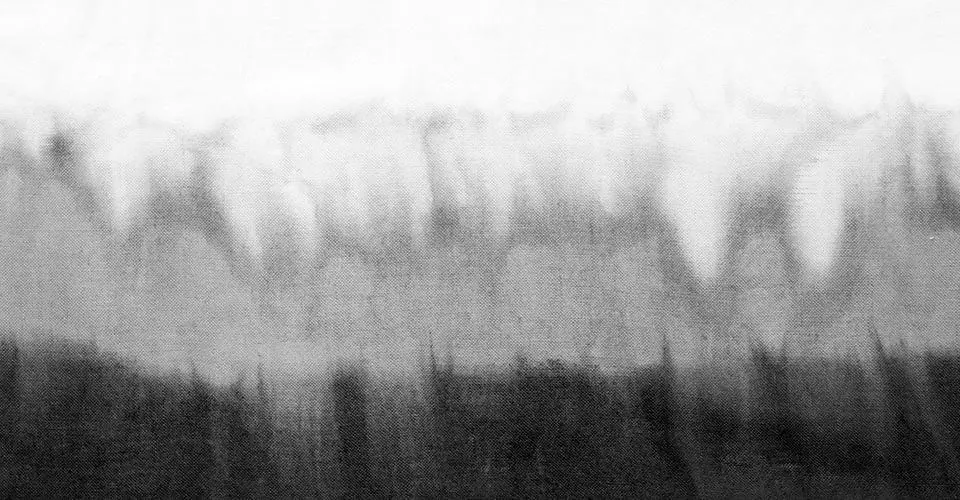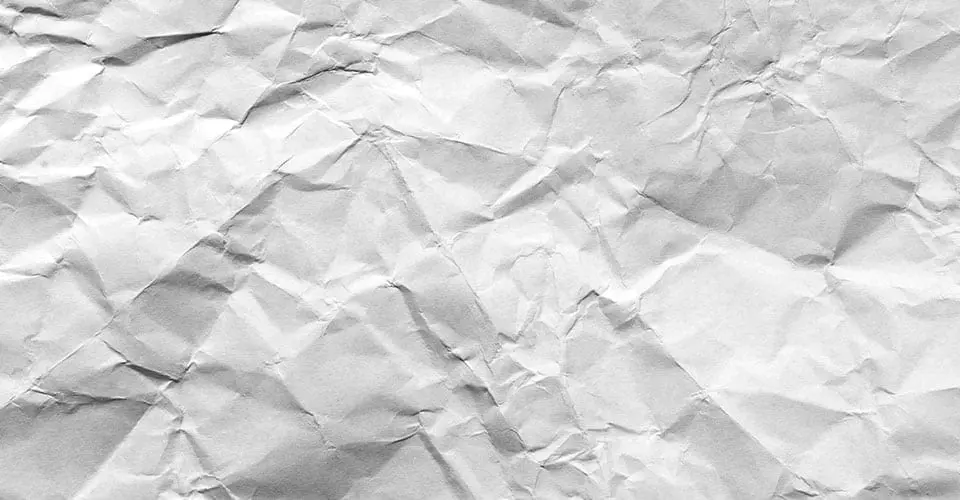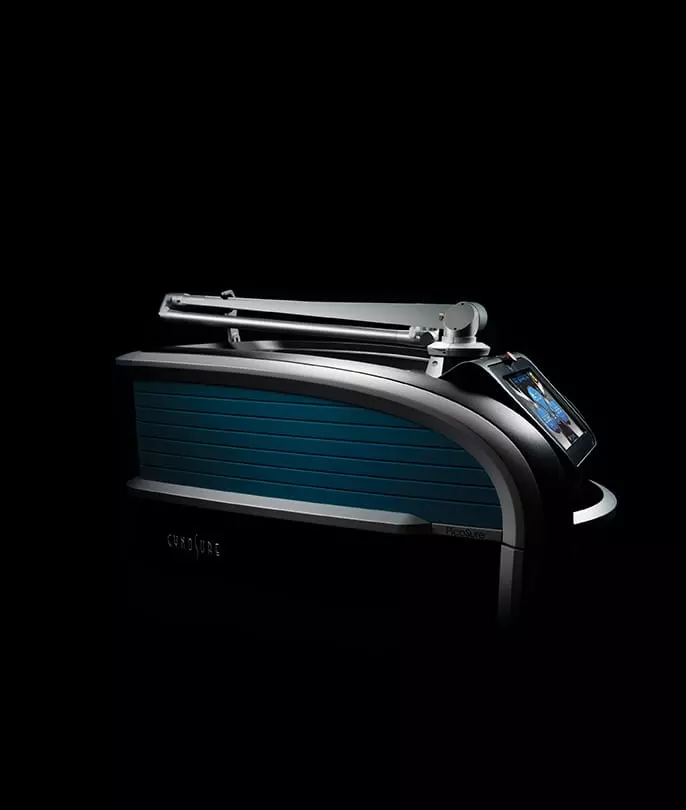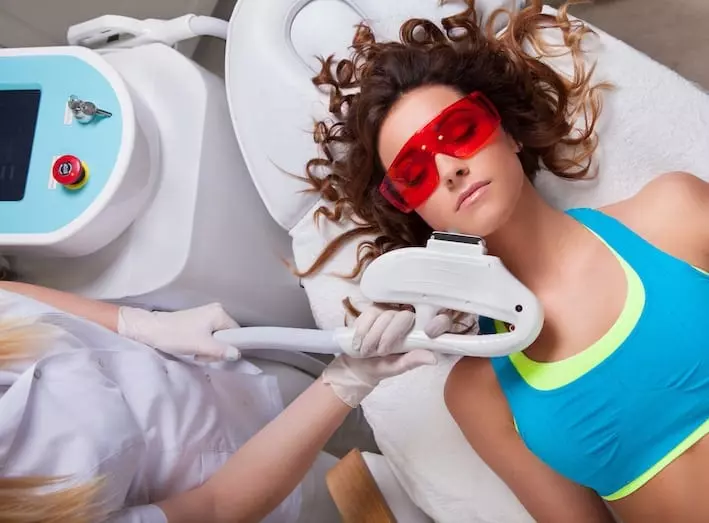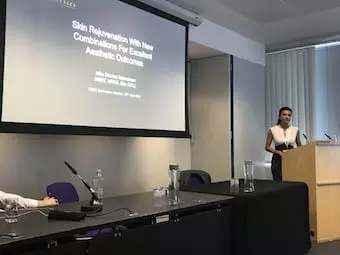Described as a breakthrough for patients who are seeking a way to improve their skin and reduce signs of ageing without the risks normally associated with traditional lasers, Picosure uses ‘PressureWave’ technology to help combat the likes of wrinkles and acne scars, as well as a wide variety of pigment issues.
Essentially, what makes this laser so different to others with similar results, is that this technology doesn’t rely on heat to burn away and destroy skin to force the body to heal – which means less pain and minimal downtime for the patient.
Because it is not a heat-based laser, it can treat all skin types, from the lightest to darkest skin.
Instead, it is made up of a unique wavelength of light (755mm) and a specialised lens which converts this highly-targeted energy into gentle pressure, designed to squeeze cells and activate the natural cell signalling process, creating a stimulation in the body of new collagen and elastin – without burning or damaging the skin.
Ideal for treating things like freckles, sunspots and other discolorations, the S-Thetics Clinic is proud to launch PicoSure in clinic as a UK study centre for Cynosure, the world’s largest Aesthetic laser company.
For more information get in contact with us at S-Thetics Clinic.
For more information, feel free to browse through our treatment options, or get in contact with us at S-Thetics Clinic.
At a Glance
Treatment Name
Picosure
Treatment Areas
Face, arms, décolletage and hands
How Does It Work
Using a unique wavelength firing at a trillionth of a second, it shatters pigment and re-activates the skin’s natural collagen and elastin process
Treatment Time
Typically 20-30 minutes depending on treatment area(s)
Treatment Target
Age-related concerns, such as fine lines, wrinkles and sunspots & acne scars
Treatment Results
Clearer, healthier complexion with less wrinkles and discolourations
How Many Treatments
Typically 2 to 6 treatments, depending on the patient
Frequency
Every 3 to 4 weeks, as needed, then maintenance typically every 3 to 6 months
Note
A full medical consultation including a VISIA digital skin analysis is required before any treatments are undertaken
Treatment Name
Picosure
Treatment Areas
Face, arms, décolletage and hands
How Does It Work
Using a unique wavelength firing at a trillionth of a second, it shatters pigment and re-activates the skin’s natural collagen and elastin process
Treatment Time
Treatment Target
Age-related concerns, such as fine lines, wrinkles and sunspots & acne scars
Treatment Results
Clearer, healthier complexion with less wrinkles and discolourations
How Many Treatments
Typically 2 to 6 treatments, depending on the patient
Frequency
Every 3 to 4 weeks, as needed, then maintenance typically every 3 to 6 months
Note
A full medical consultation including a VISIA digital skin analysis is required before any treatments are undertaken
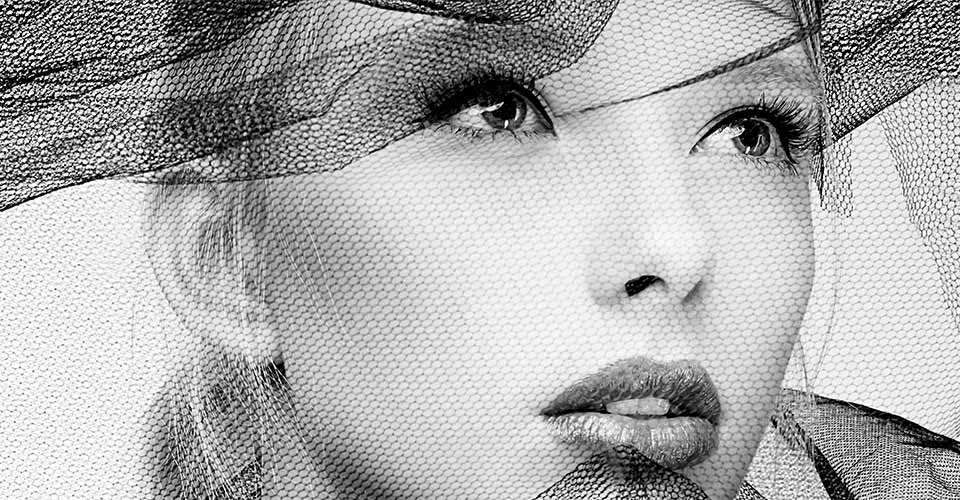
Before and After Gallery
Picosure
See more patient results.
Frequently Asked Questions
Picosure
1. What results can I expect?
Depending on the patient’s needs, results will see a reduction in fine lines, wrinkles and skin discolourations, such as freckles or sunspots.
For optimum results, patients are advised to undergo treatment every three to four weeks, then, every six months to maintain the best results.
Results can vary depending on the treatment and a member of the highly-skilled S-Thetics team will create a personalised treatment plan in order to help you reach your goal.
2. Is the treatment right for me?
What makes the PicoSure treatment so unique is that, unlike many lasers, it can be used on all skin types.
Prior to treatment, a member of the S-Thetics Clinic team will go through a detailed consultation and medical history, to ensure this path is the right one for you.
3. Are there any side effects?
The PicoSure Skin Revitalisation treatment has a minimal risk of side effects due to its very unique wavelength, which doesn’t target the outer layer of skin.
However, post-treatment, patients may experience a few hours of mild redness and slight itchiness, which should quickly resolve with no need for a long recovery time.
During treatment, patients may feel a little discomfort, which has been described as feeling like the snapping of a rubber band.
Immediately following the treatment, patients should avoid wearing make-up and ensure they were a good SPF, as skin may be more sensitive to UV rays.
If you have any further questions please don’t hestitate to contact us or book a consultation
